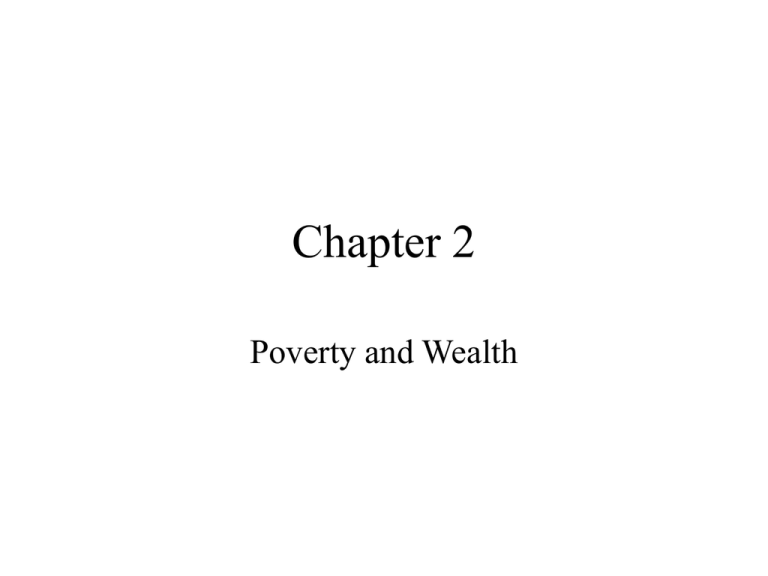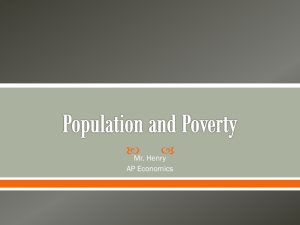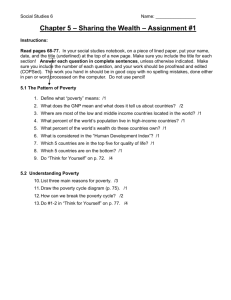Chapter 2 Lecture Notes Page
advertisement

Chapter 2 Poverty and Wealth Economic Inequality in the United States • Social Stratification – system of ranking people in a hierarchy • Social Classes – categories of people who have similar resources and opportunities • Income (salary or earned wages) – Highest-earning 20 percent of U.S. families received 48% of all income. Lowest-paid 20% received just 4% of all income. (U.S. Census 2006) • Wealth (economic assets owned) – Wealthiest 20% own about 84% of all wealth. Top 5% own 60% of all wealth in the United States, the top 1% owning nearly 40% of all private economic assets Taxation • Progressive taxation – policy that raises tax rates as income increases – $1 million or more – nearly 30% to federal taxes – $40k-80k – about 10% to federal taxes – $10-20k – about 3% to federal taxes The Rich and the Poor • The rich – top 10-20% of the population (families which have an average income around $200,000) • The poor – families with low-paying work or no job at all, usually with no wealth (12.6% poverty rate) – Poverty line – standard set by the U.S government for the purpose of counting the poor (family of four at $19,971 annually) – U.S. census Bureau 2006 – Poverty gap – difference between actual income of a poor household and the official poverty line The Poor • Age – children are at greatest risk, make up about 35% of the poor. • Race – racial minorities have a higher percentage of poor than whites, but numerically minorities do not make up the most of the poor population. • Gender – women are at greater risk of poverty. 61% of all U.S. adults who are poor are women. Gender gap as a result of feminization of poverty. • Family Patterns – poverty rate lower for the married. Single female-headed-households at great risk of poverty. • Region – inner city, urban areas have greatest poverty. Poverty lowest in areas that offer more jobs and educational opportunity The Poor • Working Families are working harder and longer. • The Working poor – Barbara Ehrenreich - Nickel and Dimed • The Nonworking poor – many poor families do not have a steady income. High percentage of poor not working at all or doing part-time work. Many reasons include: health problems, lack of skills, lack of jobs, etc. • The underclass – poor people who live in areas with high concentrations of poverty and limited opportunities for schooling or work. “Hypersegregation” Problems linked to Poverty 1. 2. 3. 4. 5. 6. Poor health Substandard Housing Homelessness Limited Schooling Crime and Punishment Political Alienation Social Welfare • Social Welfare Programs – organized efforts by government, private organizations, and individuals to assist needy people 1. Social welfare programs benefit those defined as worthy 2. Social welfare programs benefit most people 3. Social welfare programs change income inequality only a little Applying Theory to Poverty • Structural-Functional Analysis – culture of poverty, meritocracy, social disorganization, inequality is inevitable and useful • Symbolic-Interaction Analysis (defining the problem) – society or the individual (blaming the victim) • Social-Conflict Analysis – poverty and capitalism, cultural capital, feminist theory, multicultural theory, intersection theory Solutions? • Personal Responsibility (conservative) vs. Societal Responsibility (liberal)






